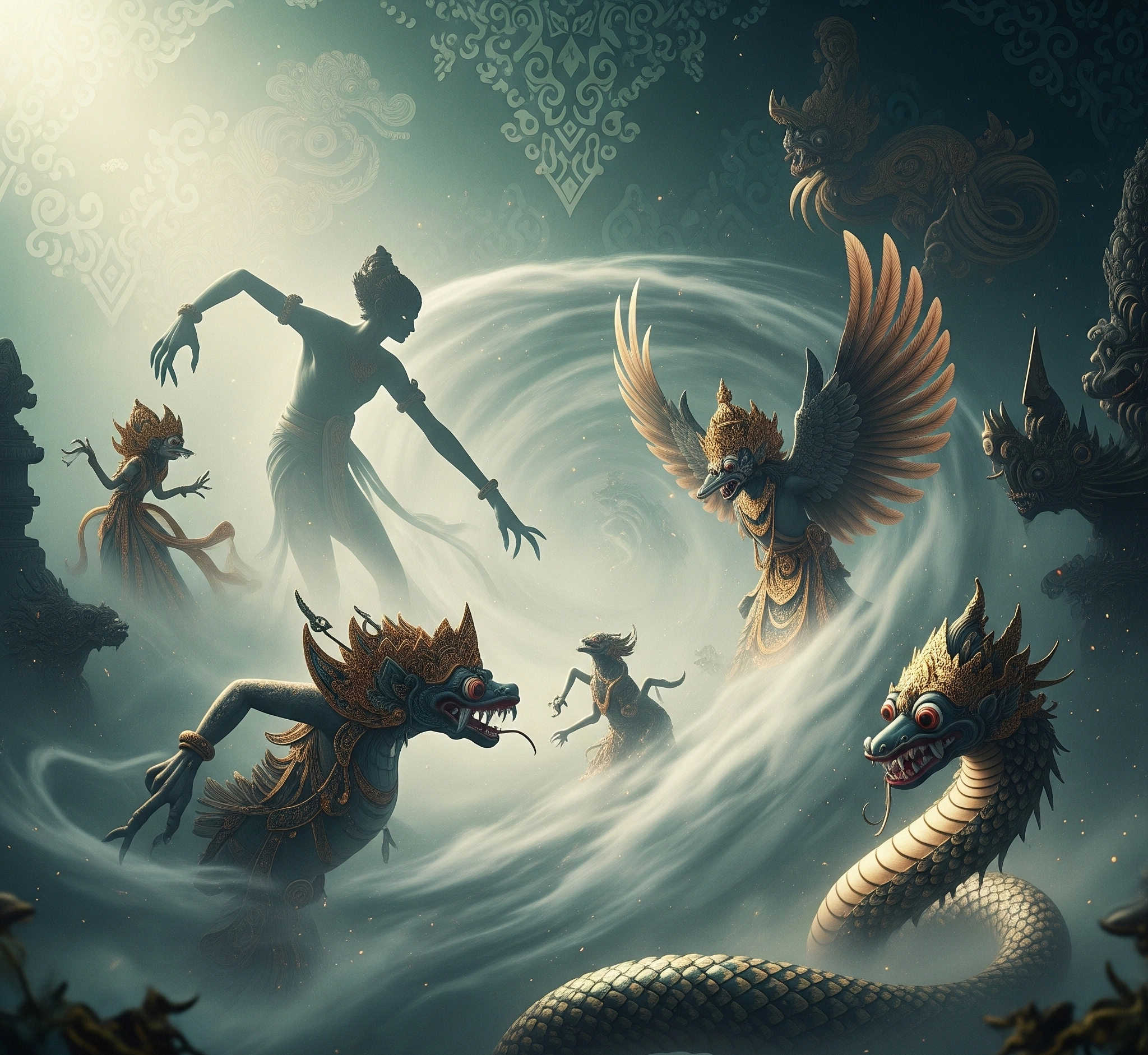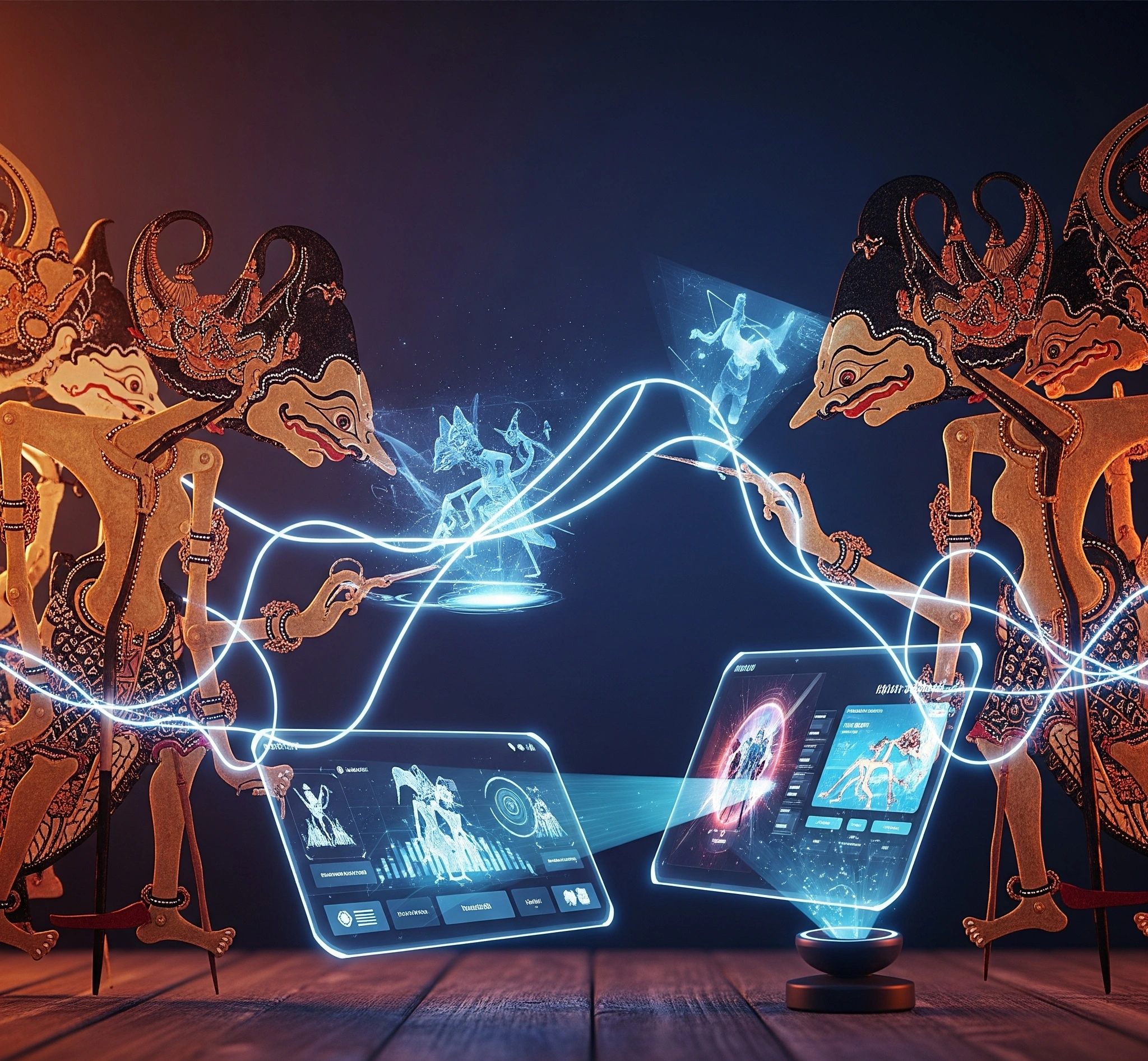Unveiling the hidden meanings and enduring power of Java’s legendary beasts and spirits.

A World Alive with Spirits
Beyond the bustling cities and serene rice paddies of Java lies a vibrant, unseen world. This realm is populated by an array of mythical creatures and spiritual beings. These entities are not mere figments of imagination; rather, they are integral to Javanese folklore and daily life. From benevolent protectors to mischievous tricksters and fearsome guardians, these beings embody the rich spiritual landscape of the island. They also reflect its deep connection to nature and the unseen forces that govern existence.
In a rapidly modernizing world, one might ask: why do these ancient tales of mythical creatures continue to hold such sway? This article will journey into the heart of Javanese folklore. It will explore the diverse pantheon of mythical beings and their unique characteristics. Furthermore, it will uncover the profound reasons why these stories remain vital. They continue to shape cultural identity, moral values, and even environmental awareness in contemporary Indonesia.
Deciphering the Archetypes of Javanese Mythical Beings
The core architecture of Javanese mythical beings is multifaceted. It often reflects a blend of animistic beliefs, Hindu-Buddhist influences, and local wisdom. These creatures typically fall into several archetypes. First, there are guardian spirits, often associated with specific places like mountains, rivers, or ancient temples. They protect sacred sites and maintain natural balance. Second, nature spirits inhabit forests, trees, and water bodies. They can be benevolent or vengeful, depending on how humans interact with their domains.
Furthermore, ancestral spirits play a significant role. They are revered and often invoked for guidance or protection. Finally, there are more mischievous or malevolent entities, often associated with darkness or specific taboos. Examples include the Genderuwo, a large, hairy demon, and the Kuntilanak, a vengeful female ghost. Understanding these diverse categories and their inherent characteristics is fundamental. It helps in grasping the intricate spiritual landscape of Javanese folklore.
The Ecosystem of Belief and Daily Life
The presence of Javanese mythical creatures extends far beyond mere stories. Instead, it permeates the very fabric of daily life and cultural practices. These beings are often invoked in traditional ceremonies, rituals, and even everyday conversations. For instance, offerings (sesajen) might be left at specific locations to appease nature spirits or seek blessings from guardian entities. This practice reflects a deep-seated respect for the unseen world and a desire to maintain harmony with it.
Moreover, these myths serve as moral lessons and social regulators. Tales of mischievous spirits often warn against greed, disrespect for elders, or venturing into forbidden places. Conversely, stories of benevolent beings encourage virtuous behavior and community cohesion. The belief in these creatures also influences architectural design, art, and even personal conduct. For example, certain house layouts might be avoided to prevent attracting negative entities. This intricate ecosystem of belief ensures that these ancient narratives remain vibrant and relevant, continuously shaping Javanese identity and worldview.
The Genderuwo: A Case Study in Social Cohesion
To truly understand the practical influence of Javanese mythical beings, let’s examine the legend of the Genderuwo. This large, hairy, and often terrifying malevolent spirit is typically associated with old, decaying trees, abandoned buildings, or dark, secluded places. Tales of the Genderuwo often involve it mimicking human voices, particularly those of loved ones, to lure victims into dangerous situations. It is also believed to be attracted to lustful thoughts or immoral acts.
While seemingly a simple scary story, the Genderuwo myth serves a profound social function. Firstly, it implicitly discourages people from loitering in unsafe or isolated areas, especially at night. This promotes community safety. Secondly, the association with immoral behavior acts as a subtle yet effective deterrent, reinforcing traditional moral codes and encouraging virtuous conduct. Parents often use these stories to teach children about boundaries and the consequences of misbehavior. This demonstrates how a mythical creature, through its narrative, actively contributes to maintaining social order and instilling communal values, showcasing its enduring practical relevance beyond mere entertainment.
Beyond Superstition: The Deeper Meanings of Javanese Myths
The enduring power of Javanese mythical creatures cannot be dismissed as simple superstition. Instead, their legends function as powerful, multi-layered cultural mechanisms. Psychologically, these beings provide a framework for understanding the unknown and coping with fear. They give form to abstract anxieties about nature’s unpredictability or the consequences of human actions. This helps individuals process complex emotions and societal norms.
Environmentally, many myths serve as ancient forms of ecological wisdom. Tales of nature spirits, for instance, often discourage deforestation or pollution. They instill respect for the natural world, promoting sustainable practices long before modern environmentalism. Sociopolitically, some creatures are linked to historical events or figures, reinforcing lineage or power structures. This unique insight reveals that Javanese mythical beings are not just fantastical characters. Rather, they are deeply ingrained cultural tools that shape behavior, transmit moral values, and foster a profound connection to both the natural and spiritual worlds.
A Framework for Engaging with Ancient Folklore in the Modern Age

Engaging with the rich tapestry of Javanese mythical creatures in our modern world requires a thoughtful and respectful approach. Here’s a strategic framework for appreciating and leveraging these ancient narratives:
- Contextual Appreciation: Understand that these myths are products of their time and culture. Appreciate them within their original context, recognizing their role in shaping historical societies.
- Symbolic Extraction: Look beyond the literal descriptions of creatures. Instead, identify the deeper symbolic meanings they convey about human nature, societal values, or environmental principles.
- Educational Application: Utilize these stories as engaging tools for teaching. They can convey moral lessons, historical insights, or even ecological awareness to younger generations in a culturally resonant way.
- Creative Reinterpretation: Explore how these mythical beings can inspire modern art, literature, film, or even digital games. This keeps the folklore alive and introduces it to new audiences, ensuring its continued relevance.
- Cultural Dialogue: Engage in respectful dialogue with communities where these beliefs are still active. Learn from their perspectives and contribute to the preservation of these invaluable oral traditions.
By adopting this framework, we can transform ancient folklore from mere tales into powerful resources. They can enrich our understanding of culture, humanity, and the world around us, fostering a deeper connection to our heritage in the modern age.
The Enduring Whispers of Javanese Folklore
The mythical creatures of Javanese folklore are far more than fantastical beings. They are living embodiments of a rich cultural heritage, profound spiritual beliefs, and timeless moral lessons. From the protective guardians of nature to the cautionary figures of human folly, these beings continue to shape the Javanese worldview. Their enduring presence in art, ritual, and daily conversation underscores their deep relevance. As the world continues to evolve, these ancient narratives serve as vital anchors. They connect contemporary society to its roots and offer unique perspectives on the human condition.
In conclusion, by engaging with and understanding these Javanese mythical beings, we not only appreciate a fascinating aspect of Indonesian culture but also gain insights into universal human experiences. The whispers of Java’s mythical creatures will undoubtedly continue to echo through generations, enriching lives and preserving a unique spiritual legacy.